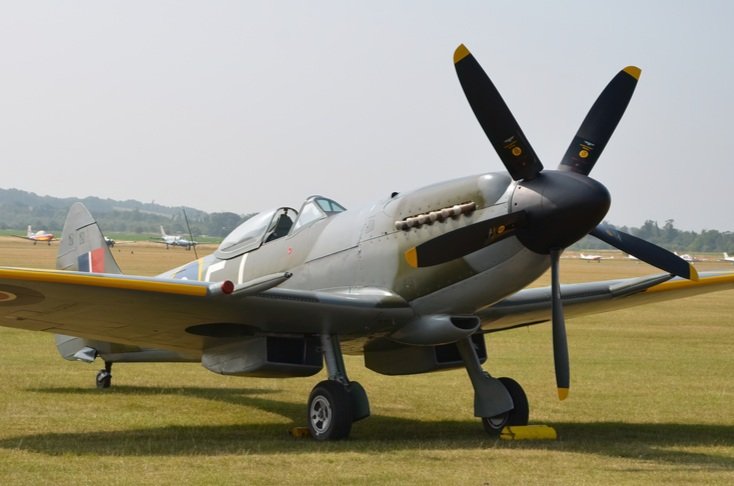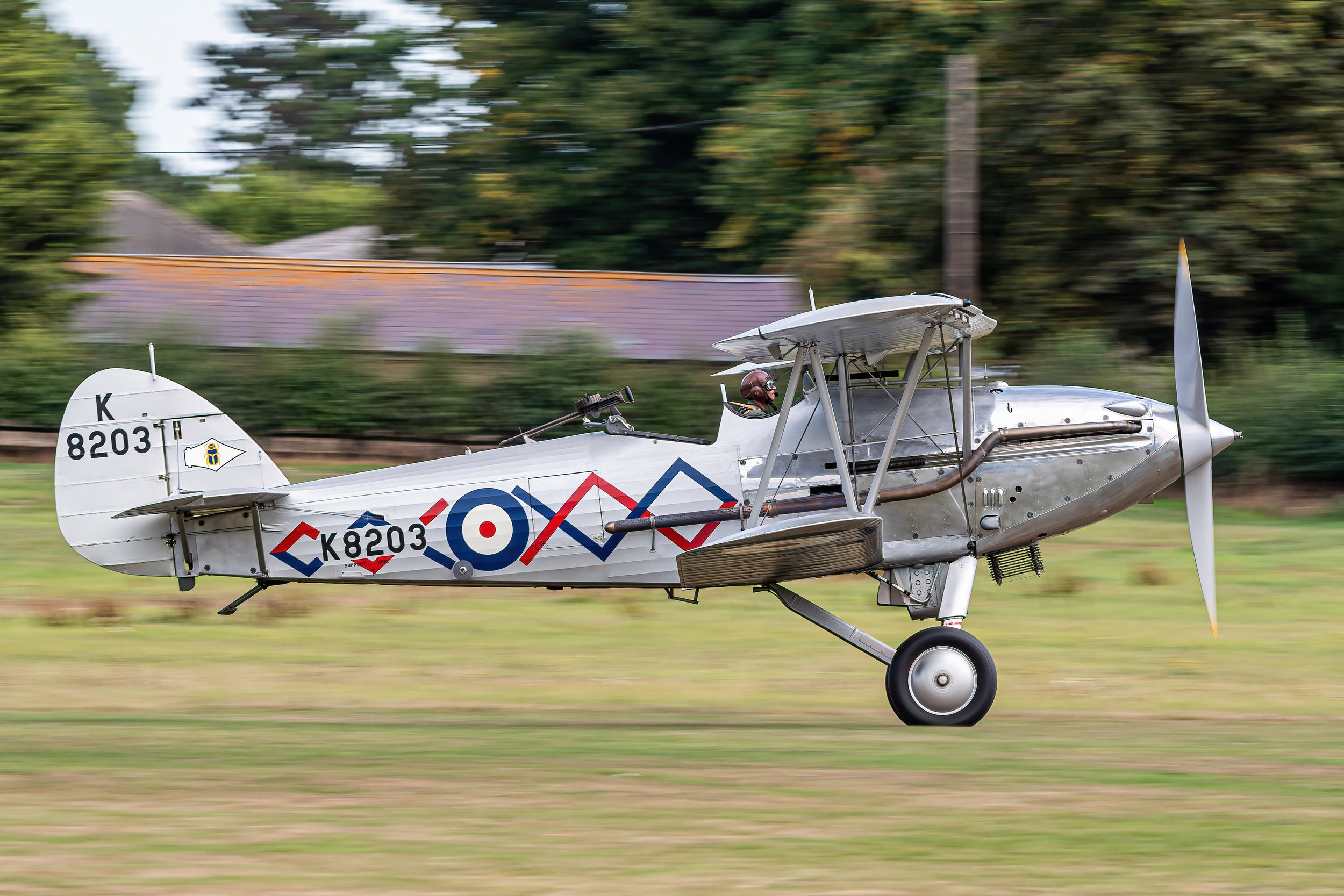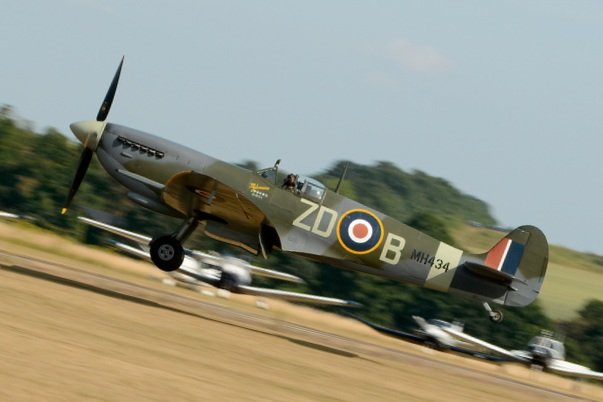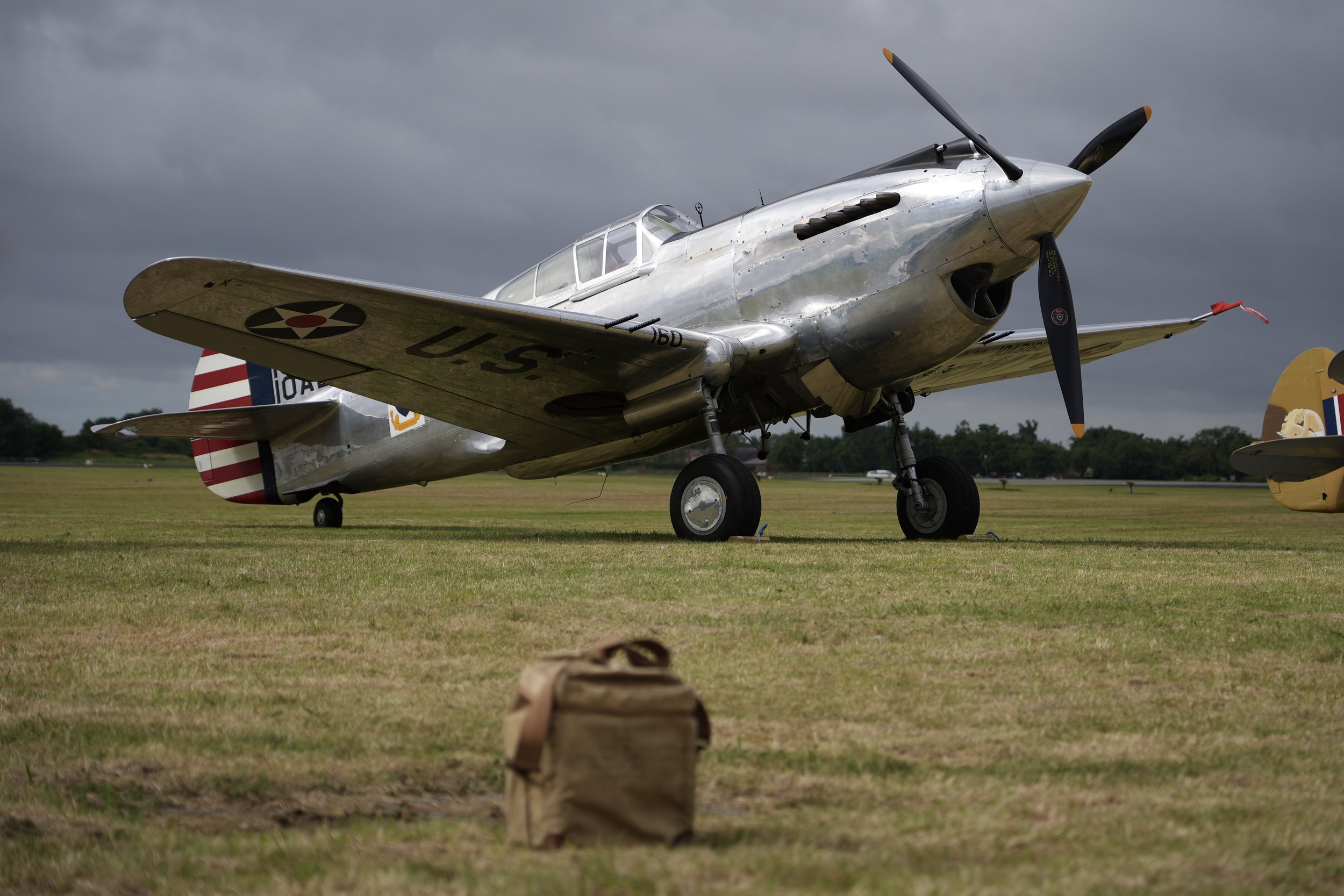Nimrod G-BWWK
Year built
1932
Aircraft
Nimrod I
Base
Duxford Airfield
The Fighter Collection’s Nimrod Mk.I S1581 was the third production aircraft built by the Hawker Engineering Company at their Kingston-upon-Thames facility and allocated the construction number 41H-43617. S1581 was subsequently delivered to 408 Fighter flight as ‘573’ embarked upon HMS Glorious. The flight became 803 NAS in April 1933 and S1581 remained with the unit aboard Glorious until she was written off in early 1938. Her subsequent history is unclear but there are indications that she may have spent a number of years with an air or sea cadet squadron prior to being sold for scrap.
The substantial remains of S1581 were recovered from a scrapyard in West London in the early 1970s and donated to the RAF Museum. The remains passed to Viv Bellamy in the early 1980s to act as a pattern for his Fury replica but were then purchased in 1994 by Aero Vintage who set about restoring this magnificent machine back to her former glory.
The restoration was both complex and demanding but by the Autumn of 1999 she was sitting on her undercarriage and the first trial assembly of the whole airframe took place. The following Spring saw the Kestrel V installed and test run for the first time in over 60 years. The eagerly awaited first flight took place at Henlow, Bedfordshire, in July 2000 with Flt Lt Charlie Brown at the controls. She is authentically painted in the colours she wore as ‘573’ when she served with 802 NAS during the 1930s. S1581 joined The Fighter Collection in 2004.
| Back to Top |
Hawker Nimrod I
The Hawker Nimrod was a British carrier-based single-engine, single-seat biplane fighter aircraft built in the early 1930s by Hawker Aircraft.
In 1926 the Air Ministry specification N.21/26 was intended to produce a successor to the Fairey Flycatcher, then in its fourth year of Naval service. By the time it was replaced by the Nimrod in 1932, the Flycatcher had become so obsolete in terms of its speed that RAF officers who flew it often joked that a sprightly fly might actually give the aircraft a run for its money. None of the aircraft designed to this specification were selected for production after trials in 1928, but the radial-engined Hawker Hoopoe, not actually designed to N.21/26, was considered promising enough to be further developed. Despite the Navy's traditional preference for radial engines, Hawker's designer Sydney Camm was convinced by his experience with the landplane Hawker Fury that the future for shipborne aircraft also lay with inline engines and began such a design, powered by a Rolls-Royce Kestrel. Before it was completed Air Ministry specification 16/30 was written around it. It flew under the initial name "Norn" early in 1930, received a production contract and was renamed Nimrod.
The Nimrod had an overall similarity to the Fury: it was a single-seater biplane with an open cockpit, fixed undercarriage and guns firing through the propeller. Its unswept, constant chord, round-tipped wings had an unequal span and strong stagger, the latter partly to enhance the pilot's view. It was a single-bay biplane braced with outward-leaning N-form interplane struts, with the upper plane held a little above the upper fuselage by cabane struts. The fabric-covered wings had metal spars and spruce ribs and carried balanced ailerons only on the upper wings.
The Nimrod's fuselage was a Warren girder structure of tubular steel and aluminium, surrounded by stringers that defined its oval cross-section. The Rolls-Royce F.9MS engine, later renamed the Kestrel IIMS was closely cowled in aluminium and the rest of the fuselage fabric covered. As with the Fury, the upper fuselage line was highest at the cockpit, placed between the trailing edges of the upper and lower planes. Its twin machine guns were mounted in the upper fuselage between pilot and engine, firing through the propeller using the standard interrupter gear. The tailplane was mounted on top of the fuselage and carried split horn balanced elevators; the vertical tail had Hawker's familiar curved shape, with a deep, wide chord, unbalanced rudder extending to the keel.
The Nimrod had a conventional undercarriage of cross axle type on trailing struts, with compression legs almost at right angles to the fuselage and an aft tail skid. It could also operate as a floatplane on single-step, cross-braced floats mounted on N-form struts. With floats fitted, the maximum speed was reduced by 47 mph (76 km/h), or 25%. The Kestrel engine's bath type radiator was mounted on the lower fuselage between the undercarriage struts.
After testing in 1930, the prototype went with HMS Eagle to Buenos Aires, flying there as part of the British Empire Trade Exhibition in March 1931. It returned to RAF Martlesham Heath for final testing. A production order for 35 was placed and the first of these flew on 31 October 1931. In the following year, another contract for a further 19 Nimrod Is was signed. With a top speed of 193 mph (311 km/h), it was only marginally slower than its land-based counterpart, the Hawker Fury.
A headrest fairing was added retrospectively to the Nimrod Is, to ease pilot strain during catapult launches. Aircraft from the later production batch were fitted with arrestor hooks. Experiments with the first of this batch, refitted with swept upper and lower wings, lead to the Nimrod II. As well as the swept wings, this had at first an uprated Kestrel II engine. Later, these were replaced with Kestrel Vs. Later Nimrod IIs had a slight increase in rudder area to improve spin recovery of inverted, float-equipped aircraft. Originally it was intended that the Nimrod II should have corrosion-resistant stainless steel, but only three of these were built. The first of 27/33 Nimrod IIs were delivered in March 1933.
| Back to Top |


| Back to Top |

































